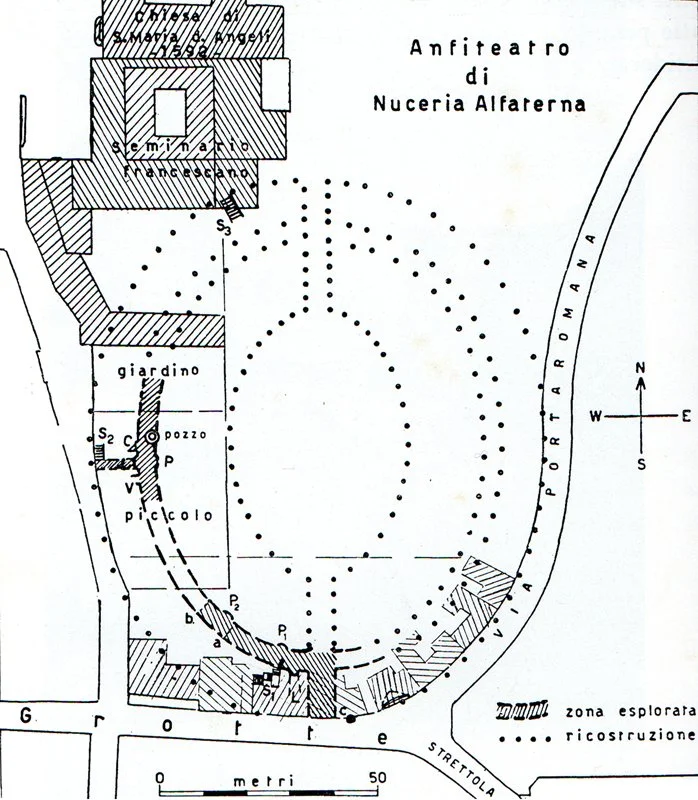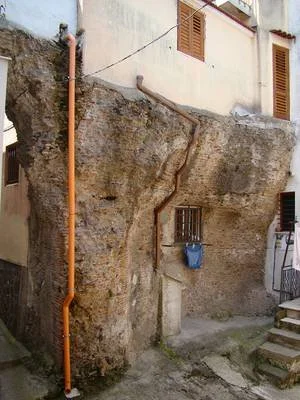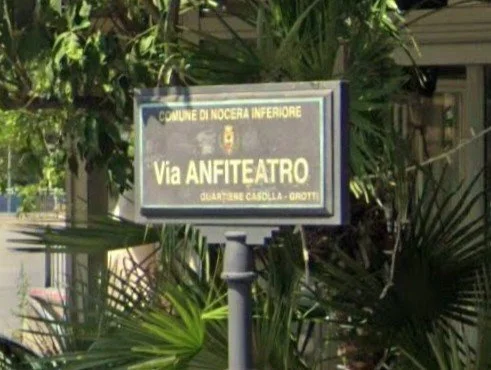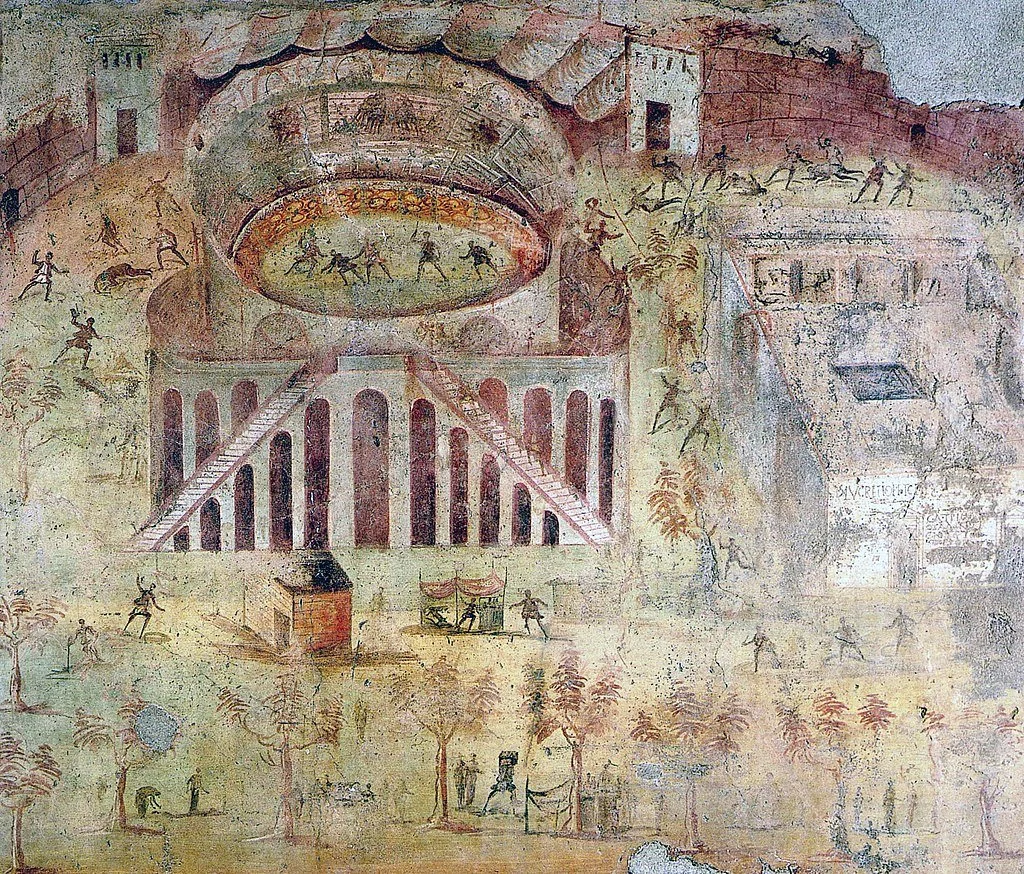XLIII Nocera Superiore (Nuceria Alfaterna)
What3words – flats.easels.tent
Construction - 1st Century AD
Capacity - 20,000
Visited January 2025
Status – None of the amphitheatre is visible from public viewpoints. Remains are buried or within private land. Nucerians were involved in the AD59 Amphitheatre riot at nearby Pompeii.
Testimony to the maxim ‘It’s all in the name’ is the road between Nocera Inferiore and Nocera Superiore, When travelling from east to west betwwen the two centres it follows a sweeping left hand bend followed by an even more extravagant right hand bend, during which its name changes from Via Porto Romana (Roman Gate Road) to Via Grotti (Road of the Caves) until it becomes Via Anfiteatro. The second of these bends follows the outer wall of an otherwise invisible Roman Amphitheatre, and features a section of housing fronts which may or may not incorporate Roman masonry. The structure was 125m long and 102m wide and its remains were first identified in the modern era by Dom Matteo Fresa, a Franciscan Friar, in 1929. Much of the remains are estimated to be up to 10m beneath present ground level. Between two properties is a low arch blocked by an iron grating. This leads into the ‘grotti’ which are parts of the vaulted passageways within the underground remains. The east side of the site is behind a high stone wall, the west side is enclosed by the buildings of a school which has a football pitch on the northern half of the arena location. The northernmost part is cut off by the buildings and grounds of a Franciscan convent.
Now part of the extensive urban and industrial sprawl which stretches along the road between Salerno and Naples, Nuceria was one of a series of settlements on that ancient route which included Pompeii and Ercolano (Herculaneum). The walled town of Nuceria Alfaterna had many similarities in size, topography and fortifications with nearby Pompeii. It was settled by retired legionaries and there was presumed to be a degree of rivalry between the citizens. A painted fresco from the house of Actius Anicetus In Pompeii (Now on display in the Naples Museum of Archaeology) features an ancient Roman rendition of a cutaway/axonometric showing the Pompeii Amphitheatre, and in which had to hand combat and bloodshed is taking place, not only within the arena itself, but also in the surrounding streets. The fresco depicts the events of 59AD when animosity between Pompeiians and visiting citizens of Nuceria escalated into stone throwing, hand to hand fighting and a full scale riot with loss of life and extensive injuries. It may be that the Pompeiians came off better (hence the celebratory mural on the wall of someone’s house) but there were consequences following Imperial involvement, in the person of Emperor Nero, who commissioned a Senate investigation resulting in a lengthy ban on Gladiatorial games in Pompeii.
The house of Actius Anicetus lies on the south side of Insula III in Pompeii near the junction between Vicolo Del Menandro and Vicolo Del Citarista east of the Theatre district.
The majority of the city of Nocera, presumably together with much of its Roman remains, was besieged and subsequently flattened in 1132 by Roger II ‘King of Sicily and Africa’, a man with a name which would have undoubtedly got him a part in Monty Python and the Holy Grail.
Street frontage of Via Grotti following external wall of Amphitheatre
Grotti
Diagram of known Amphitheatre remains.
Wall section Via Grotti - ubiquitous Italian pants hanging out to dry
Nucerians riot at the Pompeii Amphitheatre -Fresco from house of Actius Anicetus. Naples Museum of Archaeology.






